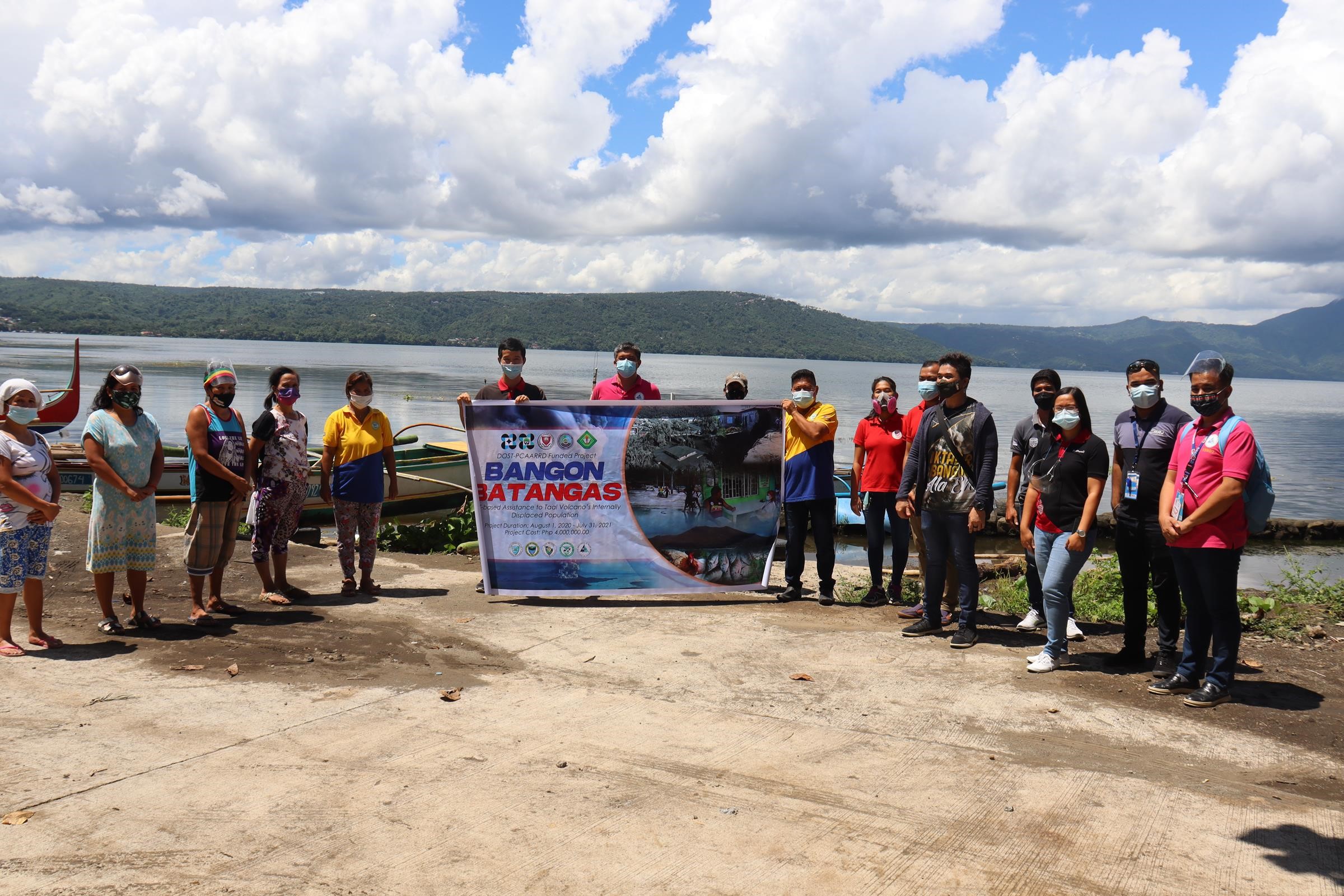Batangas State U leads in the use of S&T in rehab plans for families affected by Taal volcano

A premier state university in Batangas led a science-based initiative to help families living in the surrounding localities of Taal volcano return to productivity in spite of renewed unrest and activity.
Bangon Batangas is a science-based project that aims to create positive intervention and effective rehabilitation plans to internally displaced population within the communities affected by the Taal volcano eruption. (Photo courtesy of Bangon Batangas project team)
The Batangas State University (BatStateU) recently launched the Bangon Batangas project dubbed S&T - based intervention to Taal Volcano's Internally Displaced Population (IDP) through a funding from the Department of Science and Technology-Philippine Council for Agriculture, Aquatic, and Natural Resources Research and Development (DOST- PCAARRD) that aims to assess the damages brought about by the Taal eruption in January 2020.
The project hopes to create positive intervention and effective rehabilitation plans focusing on the 151,386 families composed of 584,236 individuals across the provinces
of Batangas, Quezon, Laguna, and Cavite. About 1,813 families consisting of 6,666 individuals were evacuated to temporary shelters during the January 2020 eruption.
The project implementer will assess the damages to their livelihood and the appropriate interventions in the municipalities of Talisay, Laurel, Agoncillo, San Nicolas, and Balete that are all in the province of Batangas and provide relief operations to affected families.
These municipalities were badly hit by the eruption and recently have been evacuated as Taal volcano had a “short-lived” phreatomagmatic eruption that occurred at the main crater of Taal Volcano last 7 July this year. The short eruption that lasted for a few minutes prompted DOST-PHIVOLCS to raise the warning from Alert Level 2 to Alert Level 3.
According to DOST-PHIVOLCS, Alert Level 3 means there is a high level of volcanic unrest. There is sustained increase in the levels of volcanic earthquakes, some may be perceptible and occurrence of low-frequency earthquakes, volcanic tremor, rumbling sounds. Moreover, Alert Level 3 is characterized by forceful and voluminous steam/ash ejections; sustained increases in SO2 emission rates; and ground deformation/swelling of the edifice. Activity at the summit may involve dome growth and/or lava flow, resultant rockfall.
The project has two main components. Primarily it is tasked to conduct assessments and surveys of at least 39% or 2,600 families of the displaced population, who are mostly sustenance farmers relying on crops and livestock farming, fisherfolks, aquaculture farmers, and ecotour guides.
The project team during a consultation with the communities. (Photo courtesy of Bangon Batangas project team)
The project will be implemented by BatStateU in collaboration with Cavite State University (CSU) which will conduct a study on the eruption’s damage to high value crops primarily coffee, while the Laguna State Polytechnic University will assess the damage to the aquaculture and fisheries.
According to the project leader Dr. Romel U. Briones of BatStateU Lobo Campus, initial study suggested that the affected residents who are in the evacuation centers still want to pursue their livelihood prior to the eruption. “They still want to plant vegetables and other high-value crops,” explained Briones.
In a recent pronouncement, DOST Undersecretary and DOST-PHIVOLCS Officer-in-Charge Dr. Renato U. Solidum Jr. expressed the need for a long-term development plan for surrounding locals as the active volcano showed renewed activity.
In an earlier news interview with the ABS-CBN News Channel, Solidum said that “There must be a long-term development plan that must consider the hazards and risks. Whatever investment, people in communities that are settled in the danger area must be considered and fully evaluated, so that if the volcano would frequently erupt from time to
time, the economic development of an area would be less affected than presently what is happening.”
Briones on the other hand suggested that the “development must be holistic and multisectoral. Hence the project targets to develop a recovery plan for agriculture and fishery for the IDPs of the Taal volcano eruption.”
He added that in the group’s initial studies conducted, the local government would need sustainable aquaculture and fisheries livelihood interventions, provide application of science-based soil amelioration to treat farmlands that were heavily affected by the ashfall, and ensure accessibility to market and other trading posts.
Aside from these, he underscored the need for “rehabilitation and recovery programs that are based on the building up of existing skills and resources which will ensure immediate social acceptance and sustainability, building back more resilient livelihood, and capacitating of residents to new skills.
Lastly, in a separate information, the Asian Development Bank pointed out the need for greater planning and resilience measures to counter natural disasters.

